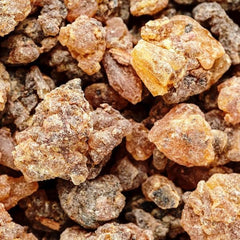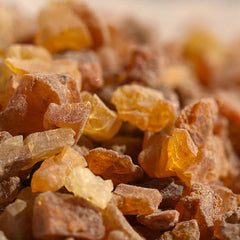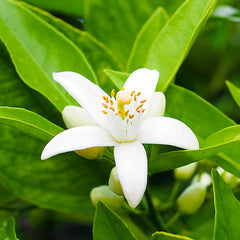What is the Difference Between Oud and Amber Perfumes?
Click For Affordable Inspired Perfume Alternatives
Perfumes are an art form that combines various fragrant ingredients to create unique and captivating scents. Among the most sought-after and mysterious notes in the world of perfumery are oud and amber. Both evoke warmth, depth, and sensuality, yet they possess distinct origins, compositions, and olfactory profiles. Understanding the differences between oud and amber perfumes can help enthusiasts and newcomers alike select fragrances that best suit their personality and preferences. In this article, we explore the origins, scent profiles, and characteristics that distinguish oud from amber, providing clarity on these luxurious and often misunderstood ingredients.
What is the Difference Between Oud and Amber Perfumes?
Understanding Oud: The Legendary Resin
Oud, also known as agarwood, is one of the most precious and rare ingredients in perfumery. Its origin is rooted in the heart of Southeast Asia, India, and the Middle East. Oud is a resinous heartwood that forms when the Aquilaria tree becomes infected with a specific mold. This infection causes the tree to produce a dark, aromatic resin as a defense mechanism. Harvesting oud is a painstaking process, making it incredibly rare and valuable.
In perfumery, oud is celebrated for its deep, complex, and often smoky aroma. It is considered a symbol of luxury and spirituality, frequently used in Middle Eastern and Asian fragrances. Oud can be blended with a variety of notes, from floral to woody, to create a wide spectrum of scents.
Oud's Olfactory Profile
- Rich and complex: Combines woody, smoky, and sometimes sweet or animalic notes.
- Earthy and resinous: Evokes the feeling of aged wood and incense.
- Intense and long-lasting: Oud often has a powerful projection and longevity on the skin.
- Mysterious and spiritual: Frequently associated with tradition, mysticism, and luxury.
Oud perfumes tend to be bold and opulent, making them ideal for evening wear and special occasions. They appeal to those seeking a distinctive scent that exudes confidence and sophistication.
Understanding Amber: The Warmth of Ancient Resins
Amber, in the context of perfumery, is not a single ingredient but rather a warm, sweet, and resinous accord that evokes the feeling of cozy comfort. The term "amber" originally referred to fossilized tree resin, but in modern fragrances, it is a blend of several ingredients designed to produce a warm and inviting scent.
Amber perfumes typically incorporate a combination of vanilla, benzoin, labdanum, tonka bean, and other resins. These ingredients are carefully blended to create a harmonious and enveloping aroma that is both sensual and comforting. Amber is widely used across various fragrance families, from oriental to floral, making it one of the most versatile scent profiles.
Amber's Olfactory Profile
- Warm and sweet: Often characterized by vanilla and honey-like notes.
- Resinous and balsamic: Features labdanum and benzoin that add depth and richness.
- Soft and enveloping: Creates a sense of coziness and intimacy.
- Long-lasting and comforting: Amber accords tend to linger on the skin, making them perfect for colder months or evening wear.
Amber perfumes are generally smooth, seductive, and inviting. They are suitable for everyday wear or special moments when a warm, cozy aura is desired. The versatility of amber accords makes them a staple in many fragrance collections.
Key Differences Between Oud and Amber Perfumes
While both oud and amber evoke warmth and luxury, their origins, compositions, and olfactory impressions differ significantly. To better understand these differences, let's compare their key characteristics:
Origins and Ingredients
- Oud: Derived from the resinous heartwood of the Aquilaria tree, often considered a natural, precious ingredient with roots in nature and tradition.
- Amber: An artificial or blended accord created from various resins, vanilla, and balsamic notes, representing a warm, sweet aroma rather than a single natural ingredient.
Scent Profile and Notes
- Oud: Deep, smoky, woody, sometimes animalic or leathery, with complex layers that can include spices, floral, or citrus notes when blended.
- Amber: Warm, sweet, balsamic, and honeyed with vanilla, benzoin, and labdanum, creating a soft and inviting scent.
Intensity and Projection
- Oud: Typically very intense, with a strong projection that can be both alluring and overpowering if not balanced properly.
- Amber: Usually softer and more diffusive, providing a cozy aura without overwhelming the senses.
Usage and Occasions
- Oud: Favored for evening wear, formal occasions, or when a statement of luxury and sophistication is desired.
- Amber: Versatile for both daytime and evening, suitable for casual or formal settings, especially in cooler weather.
Price and Rarity
- Oud: Generally more expensive due to rarity, labor-intensive harvesting, and the natural process involved.
- Amber: Usually more affordable, as it is often a crafted accord using readily available ingredients.
Choosing Between Oud and Amber Perfumes
Deciding whether to opt for an oud or amber perfume largely depends on personal preferences, the occasion, and the desired impression. Here are some tips to help guide your choice:
- If you prefer bold, exotic, and complex scents: Oud perfumes are the ideal choice. They make a strong statement and convey a sense of luxury and mystique.
- If you seek comfort, warmth, and versatility: Amber perfumes offer a softer, more inviting aroma suitable for everyday wear.
- Consider the occasion: Oud is perfect for evening events or formal settings, while amber can transition from day to night seamlessly.
- Personal chemistry: Test both types of fragrances on your skin, as they can evolve differently depending on individual body chemistry.
Conclusion: Embracing the Elegance of Oud and Amber
Understanding the differences between oud and amber perfumes allows fragrance enthusiasts to select scents that truly resonate with their personality and style. Oud, with its deep, smoky, and complex profile, exudes opulence and mystique, making it a favorite for those who desire a statement fragrance. Amber, on the other hand, offers a warm, sweet, and comforting aroma that is both versatile and inviting, suitable for various occasions.
Both ingredients have a rich history and cultural significance, embodying different facets of luxury and sensuality. Whether you prefer the exotic allure of oud or the cozy warmth of amber, exploring these scents can elevate your fragrance experience and help you express your unique personality. Embrace the elegance of these timeless notes and discover the perfect scent that complements your essence.
Buy Perfumes - Best Online Retailers
Click For Affordable Inspired Perfume Alternatives
Click For The Best Niche Perfumes & Decants
Pheromone Perfumes - Confidence, Attraction & Appeal - Click For More
Home Fragrances & Candle Warmers - Click To Scent Up Your Spaces Today!



